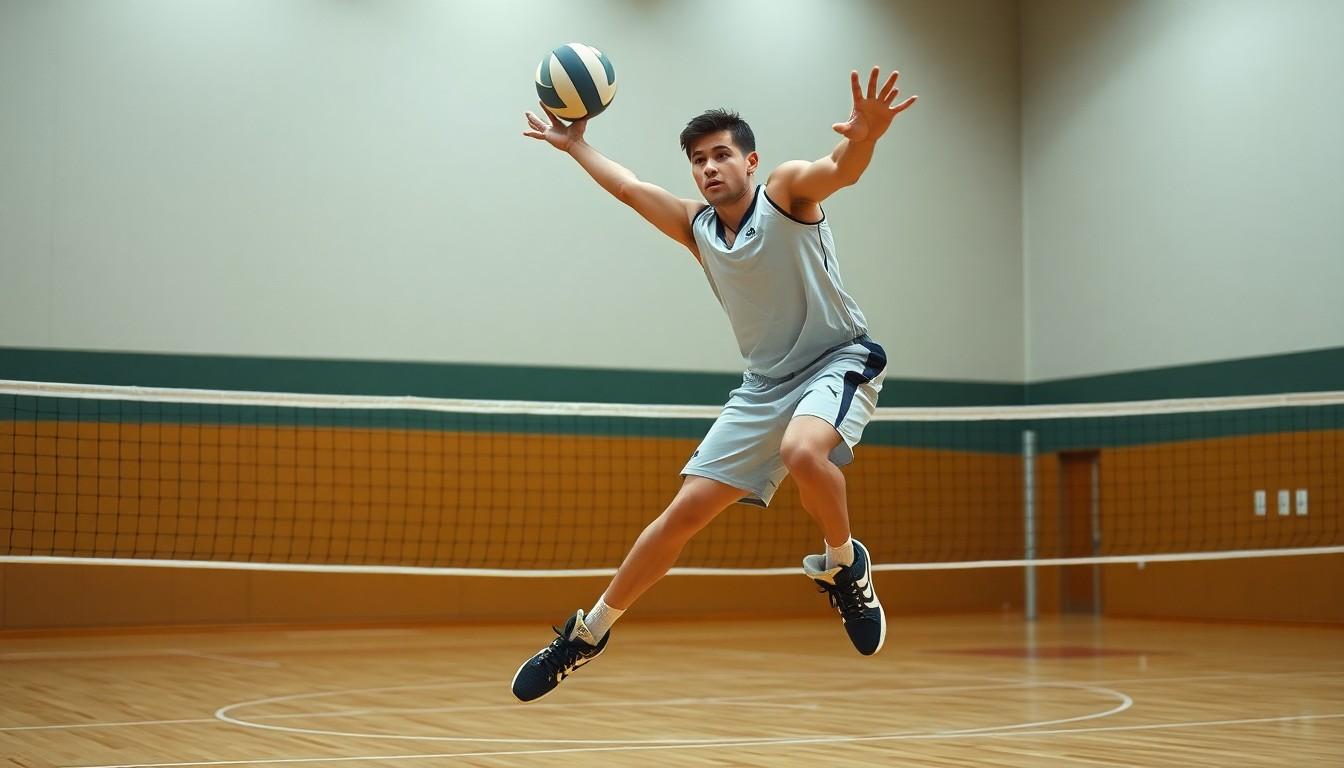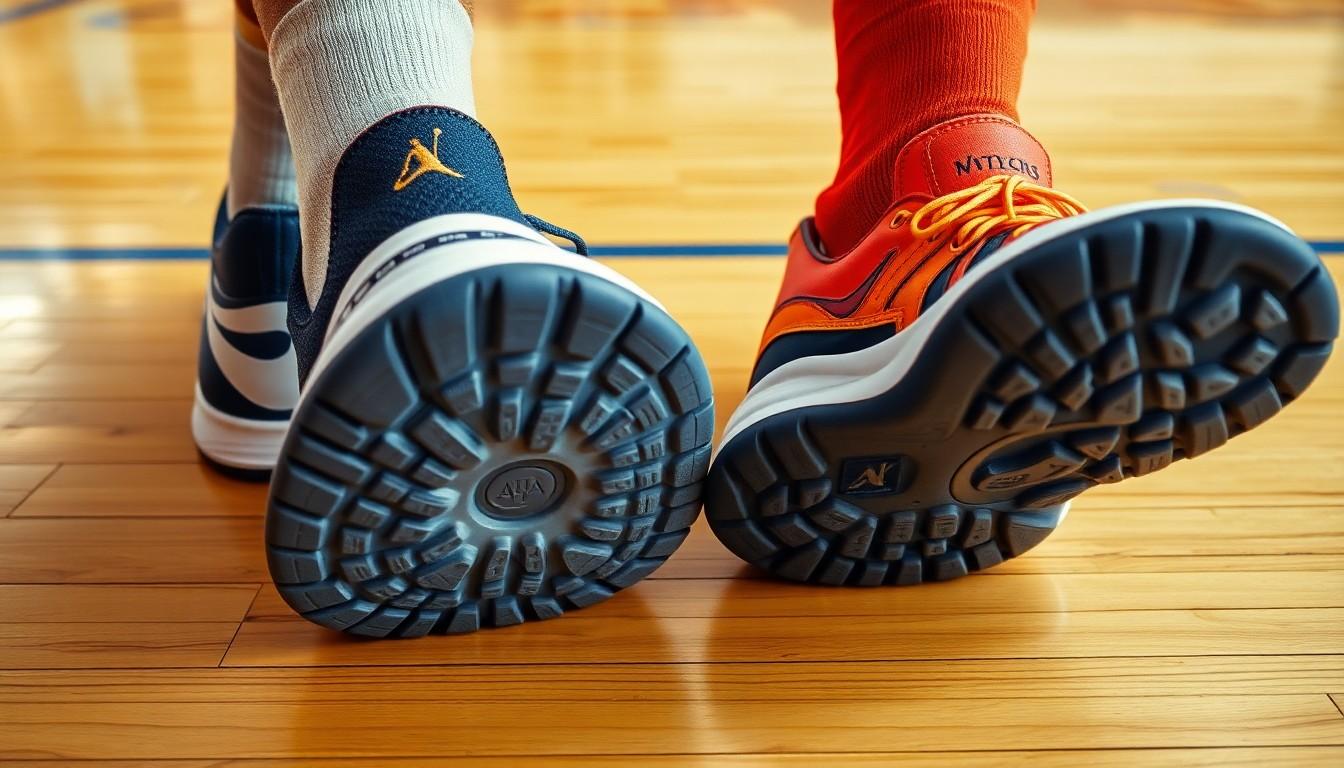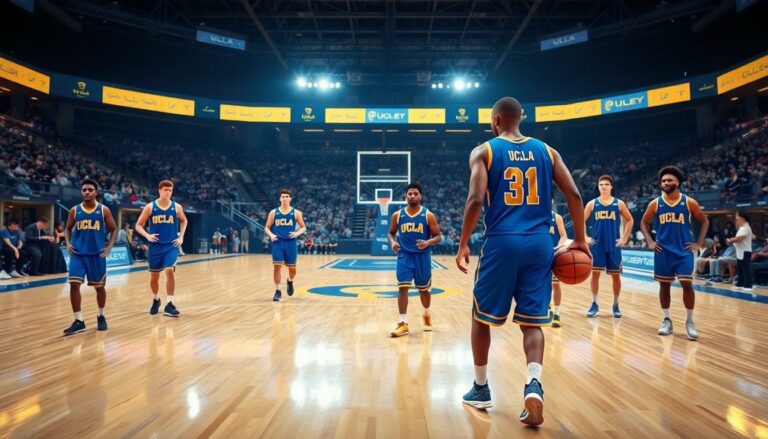
Can You Use Basketball Shoes for Volleyball? Discover the Surprising Truth
When it comes to sports, the right gear can make all the difference. Picture this: you’re soaring through the air for a volleyball spike, only to realize your shoes are better suited for a slam dunk. So, can basketball shoes pull double duty on the volleyball court? Spoiler alert: they might just surprise you!
Can You Use Basketball Shoes for Volleyball
Basketball shoes feature specific designs that cater to rapid movements, making them appealing for volleyball. High ankle support in basketball shoes helps prevent ankle injuries during jumping and lateral movements, which are common in volleyball. Cushioning in the sole absorbs impact, providing comfort during high-intensity play.
Volleyball requires quick bursts of speed and agility, and basketball shoes support these actions. Traction patterns on basketball shoes enhance grip on various surfaces, similarly beneficial on indoor volleyball courts.
However, basketball shoes may lack some volleyball-specific features. Weight can be a consideration, as basketball shoes are often heavier than typical volleyball shoes. Volleyball footwear generally prioritize lightweight construction for swift movements.
Ventilation is another aspect where basketball shoes may differ. Breathable materials in volleyball shoes enhance airflow, helping regulate temperature during intense matches. Players might want to assess whether basketball shoes offer sufficient breathability for their comfort.
Ultimately, individual preferences will play a critical role in whether basketball shoes suffice for volleyball. Some athletes may find basketball shoes adequately support their volleyball performance, while others may prioritize footwear designed exclusively for volleyball. Testing both options can lead to informed decisions, maximizing comfort and performance on the court.
Key Differences Between Basketball and Volleyball Shoes

Understanding the differences between basketball and volleyball shoes helps in selecting the right footwear for optimal performance on the court.
Sole Design and Traction
Sole design varies significantly between basketball and volleyball shoes. Basketball shoes typically have a flat, wide sole that enhances stability during quick lateral movements. In contrast, volleyball shoes possess a gum rubber sole that offers superior grip on indoor surfaces. Traction patterns are designed for different movements: basketball shoes support multidirectional play, while volleyball shoes focus on forward and backward motion to aid in jumping and landing. The unique traction ensures players maintain control during dynamic gameplay.
Cushioning and Support
Cushioning in basketball shoes often prioritizes impact absorption for jumping and running. Well-cushioned insoles enhance comfort during intense gameplay. Volleyball shoes, however, feature lighter cushioning to promote agility and responsiveness. Support levels also differ; basketball shoes provide high ankle support, which aids in injury prevention during sudden stops and sharp turns. Volleyball shoes typically offer a lower profile to facilitate swift movements and enhance stability. Each type of shoe is engineered to meet specific athletic demands, making understanding these differences essential for performance.
Advantages of Using Basketball Shoes for Volleyball
Using basketball shoes for volleyball presents several advantages. They share similarities in movement and footwork that enhance performance on the court.
Similarities in Movement and Footwork
Both basketball and volleyball involve lateral movements and explosive jumps. Quick sprints and sudden direction changes are essential in both sports. Basketball shoes provide support during these rapid movements, making them suitable for volleyball as well. High ankle support helps prevent injuries when players jump and land. Adequate cushioning absorbs impact well, providing comfort during intense rallies. Many athletes find that the responsive feel of basketball shoes translates effectively to the volleyball court.
Potential Cost Savings
Investing in basketball shoes can yield significant cost savings. Many players already own basketball shoes, making them a viable option without the need for additional purchases. Purchasing specialized volleyball shoes may require a larger investment, especially for high-quality models. Balancing performance and budget becomes easier when one pair serves multiple sports. Additionally, basketball shoes often feature durable materials that withstand rigorous play. This durability ensures a long-lasting option for athletes committed to both sports.
Disadvantages of Using Basketball Shoes for Volleyball
Basketball shoes come with certain drawbacks when used on a volleyball court. These disadvantages can affect both player safety and performance.
Risk of Injury
Weight contributes to the risk of injury. Heavier basketball shoes can limit agility, increasing the chance of ankle sprains during fast lateral movements. Support levels vary; basketball shoes prioritize ankle support, which might restrict freedom of movement crucial for volleyball. Stiffer soles provide stability but can compromise shock absorption upon landing. Players accustomed to lightweight volleyball shoes might feel unbalanced, so the risk of falls or missteps is higher.
Performance Limitations
Traction differences impede performance. Basketball shoes feature a flat sole designed for court stability, which may not offer the grip needed for quick pivots in volleyball. Grip on indoor surfaces often suffers, as volleyball shoes utilize specialized gum rubber soles for enhanced traction. Lack of ventilation in basketball shoes results in excessive heat buildup, affecting comfort during long matches. When players need to make sharp movements, optimal responsiveness becomes critical, and basketball shoes might not deliver the necessary agility.
Recommendations for Choosing the Right Footwear
Selecting the right footwear for volleyball impacts performance significantly. Consider the weight of the shoe first. Lighter options enhance agility and help players move quickly. Look for cushioned insoles that provide comfort during play. Additional ankle support plays a role, especially during jumps and lateral movements.
Evaluate the traction pattern on the sole, ensuring it offers grip for indoor surfaces. Volleyball shoes typically have gum rubber soles, designed for quick pivots and sharp turns. Basketball shoes may have a different sole formulation, which can affect performance during rapid changes in direction.
Ventilation matters as well. Shoes with breathable materials keep feet cool and dry, reducing the risk of overheating during intense matches. Many volleyball shoes incorporate mesh panels for this purpose, enhancing airflow throughout the game.
Another aspect is the fit of the shoe. A snug fit ensures stability, while too much looseness can lead to blisters and discomfort. Players should try on shoes while using outdoor courts to assess their suitability for volleyball movements.
Ultimately, individual preference guides the decision. Players accustomed to basketball shoes should assess how they feel during volleyball drills. Testing both basketball and volleyball-specific shoes can lead to the best choice, balancing comfort and performance on the court.
Comfort and Performance
Choosing the right footwear can significantly impact performance in volleyball. While basketball shoes offer certain advantages like ankle support and cushioning, they also come with drawbacks that may affect agility and grip. Players need to weigh these factors carefully. Testing both basketball and volleyball shoes is essential to determine which provides the best fit and functionality for individual playing styles. Ultimately, the right choice will enhance comfort and performance on the court, ensuring athletes can play to the best of their abilities.



